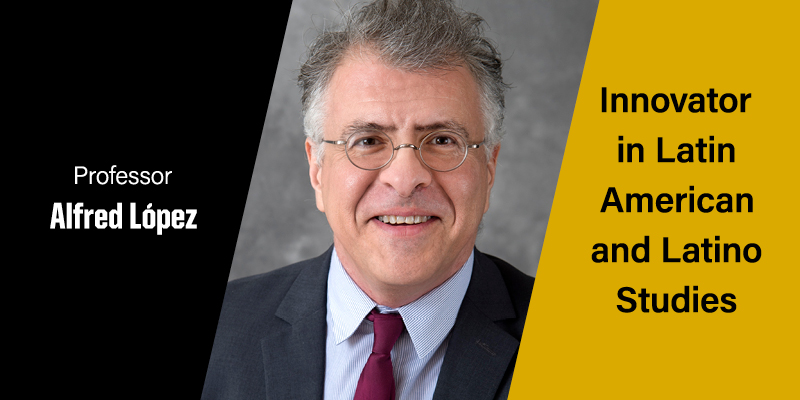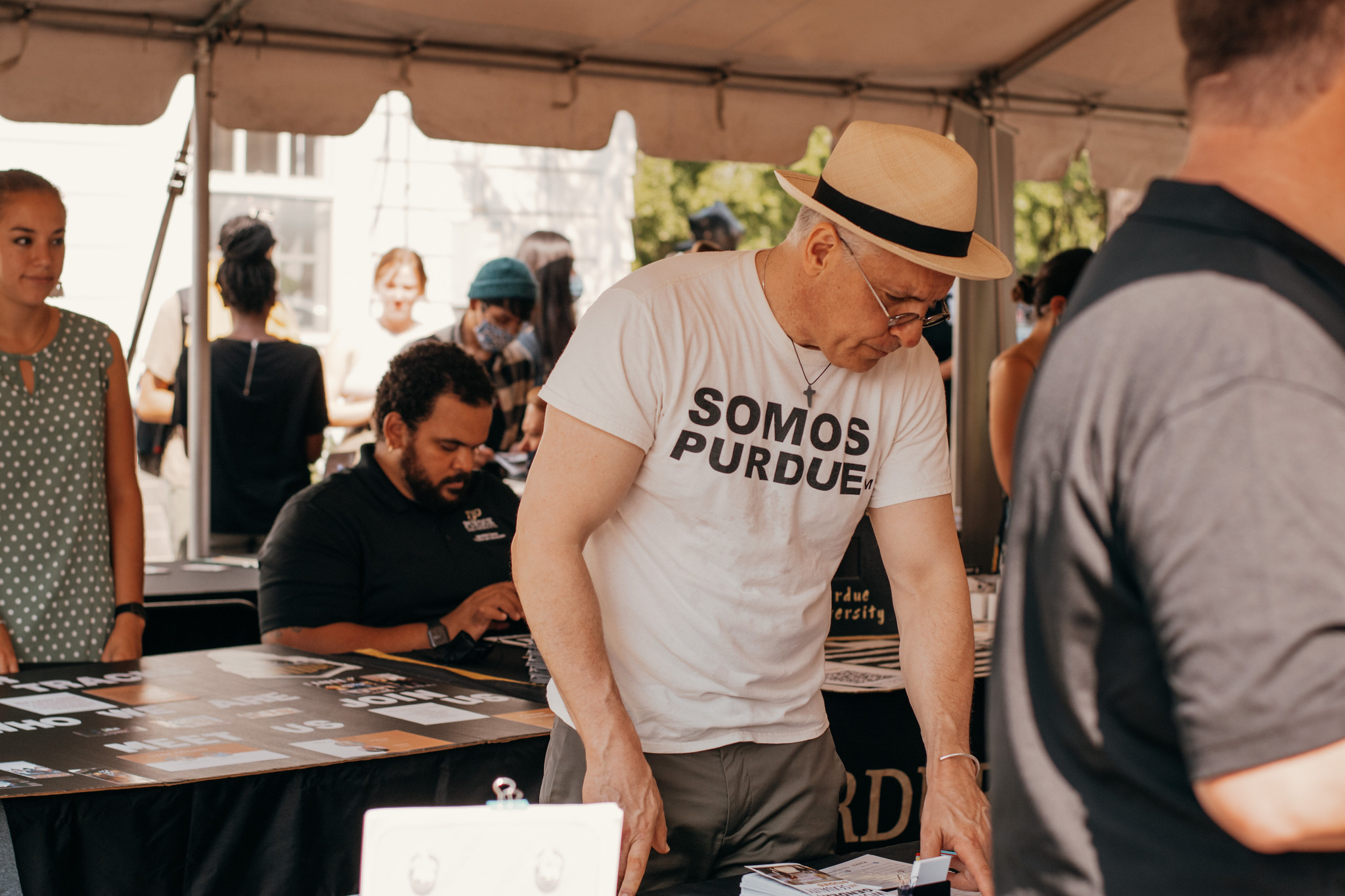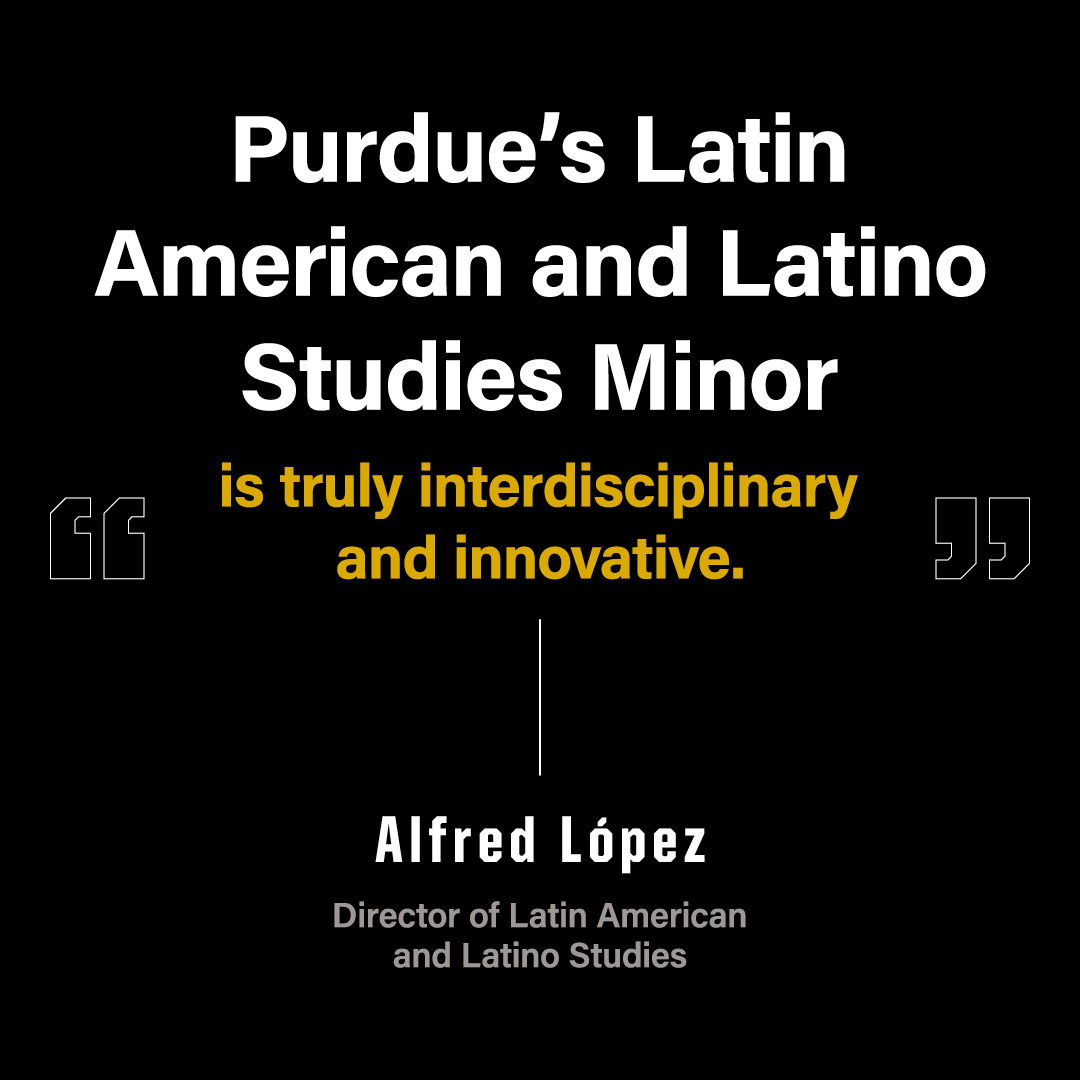
Latin American minor covers breadth of history and cultures
Purdue’s Latin American and Latino Studies Program now offers a 15-credit minor. Students select from a smorgasbord of about 45 courses offered by departments across campus to learn about Latinx communities, Latin America and the Caribbean.
The broad range of courses explore the varied cultures, histories, political systems, languages and literatures of the Americas. All are cross-listed, so students in the program get credit for courses taken in other departments. Connections with the faculty can also lead students to internships and study abroad opportunities in countries across Latin America and the Caribbean.
 Professor Alfred López, who is starting his fifth year leading the program, also serves as interim director of the School of Interdisciplinary Studies. A U.S.-born son of Cuban immigrants, he learned to speak English watching Sesame Street. Like many children of immigrants, López learned the skill of having to switch between, at least, two worlds becoming bicultural and bilingual.
Professor Alfred López, who is starting his fifth year leading the program, also serves as interim director of the School of Interdisciplinary Studies. A U.S.-born son of Cuban immigrants, he learned to speak English watching Sesame Street. Like many children of immigrants, López learned the skill of having to switch between, at least, two worlds becoming bicultural and bilingual.
Lopez teaches the only mandatory course for the minor— Introduction to Latin American and Latino Studies. In years past, many of his students enrolled to learn more about their own heritage, he says, but last spring semester, most did not have a Latinx background. Some just want to know more about Latin American and U.S. Latinx culture. Most understand that the jobs of the future will require a multi-cultural understanding.
“Our goal is to provide a level of cultural literacy—what it means to be Latinx—to be able to function in a multi-cultural world, whether that be in a workplace as close as Chicago or Los Angeles, or as far as Ecuador or Brazil,” López said.
Faculty opportunity
The program is located in the College of Liberal Arts but open to all. So far, its affiliated faculty are based in the departments or schools of anthropology, English, languages and cultures, history and political science.
“Unlike programs at most other universities, where they would have a stand-alone program on Latin American Studies, this innovative minor is truly interdisciplinary,” López said. “We welcome faculty in all disciplines to join us if they have or can add a related component to a class they already teach.
“For example, we have had conversations exploring how EPICS (Engineering Projects in Community Service) could participate. Perhaps it could use our students as language or cultural translators for engineering service projects in the southern hemisphere or Latinx communities at home.”
Complicated history, many cultures
 When they start his class, López says, many are unaware of the long and complicated histories of Hispanic people in America. They are surprised colonization dates back to the 15th century or even that the Spaniards named Los Angeles and the Colorado River.
When they start his class, López says, many are unaware of the long and complicated histories of Hispanic people in America. They are surprised colonization dates back to the 15th century or even that the Spaniards named Los Angeles and the Colorado River.
The beginning students also have yet to grasp that there are many cultures in the southern hemisphere—21 countries in South and Central America alone, plus 26 islands in Caribbean. Yet there is commonality such as colonization and post-colonization and the challenges that followed, says one of the many affiliated faculty members, Dawn F. Stinchcomb. An associate professor of Latin American literature and culture in the Department of Spanish and Portuguese, she offers two classes that count toward the minor, one on Latin American civilization and the other on the culture.
“My students tend to be seniors and double majors, many in Spanish and STEM fields,” Stinchcomb said. “I teach about issues of race, ethnicity and cultural ethnicity under a larger banner of nationality. We take a broad view and consider all the people who make up Latin America, including those of African Asian and Middle Eastern decent.”
Synergies
The program is closely tied to the Latino Cultural Center as well as Latinx student organizations. They collaborate on events and speakers. Last year, for example, featured Jose Antonio Vargas, author of Dear America: Notes of an Undocumented Citizen. López even teaches his class at the cultural center.
Crucially, the cultural center and student groups help academic advisors spread the word to students about the program’s opportunities, López said.
“We wouldn’t have a program without their help,” he said.
- Archived Stories
- A servant Boilermaker who lives on in others
- Latino Cultural Center: 20-year-old dream now a vibrant reality
- Purdue Latinx students gain strength from looking inward and connecting outward
- Latin American minor covers breadth of history and cultures
- Former student plants seeds for growth, sustainability
- From Nicaragua to Purdue, the roots that became wings